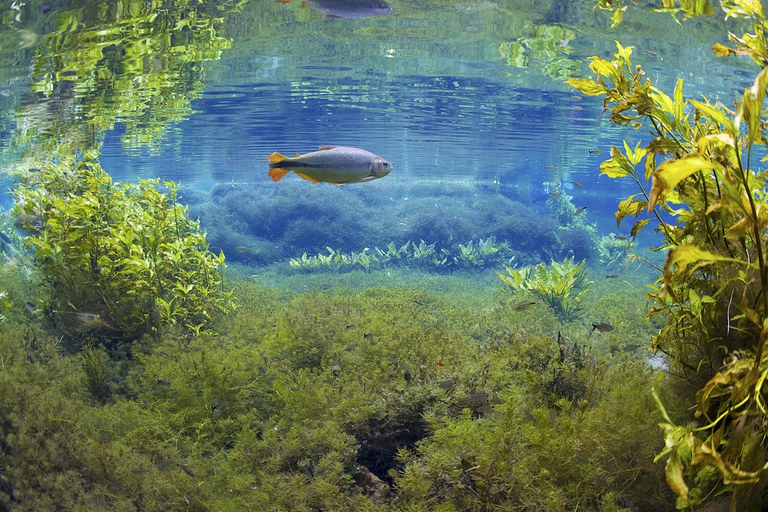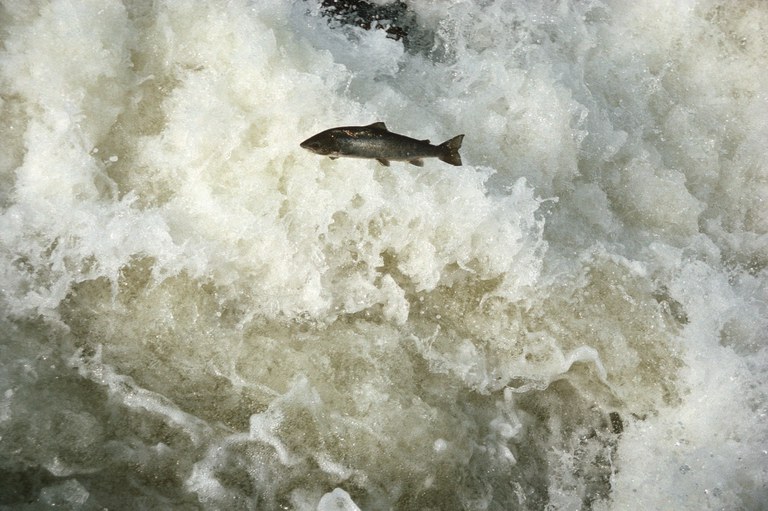Indonesian stingray marks first marine fish extinction on IUCN Red List
2023.12.12
Dubai, United Arab Emirates
 Delegates walk at the United Nations Climate Change Conference COP28 in Dubai, United Arab Emirates, December 8, 2023.
Delegates walk at the United Nations Climate Change Conference COP28 in Dubai, United Arab Emirates, December 8, 2023.
The Java Stingaree, an extremely rare species of stingray known solely from a single specimen collected at a Jakarta fish market in 1862, has officially been declared extinct, the International Union for Conservation of Nature (announced Monday at the COP28 climate summit in Dubai.
The species is now listed as extinct on the IUCN’s Red List of Threatened Species.
The loss marks “the first instance of a marine fish species going extinct due to human activities,” Craig Hilton-Taylor, the head of the IUCN Red List Unit, told Radio Free Asia.
Intensive and unregulated fishing, coupled with coastal habitat loss and degradation due to industrialization, were the primary factors leading to the extinction of the Java Stingaree, according to lead assessor Julia Constance, a PhD candidate at Charles Darwin University in Australia.
The IUCN’s Red List, established in 1964, is the world’s most comprehensive resource for assessing the extinction risk and status of animal, fungus, and plant species. It offers critical data on their range, population, habitat, threats, and conservation actions for informed decision-making and policy changes.
“Climate change is a threat to the diversity of life in our planet. Today, we bring with us evidence of the effects of climate change in the destruction of nature on species,” Gretel Aguilar, IUCN Director General, told reporters in Dubai.
The number of species on the Red List has gone up from 150,388 to 157,190, while 44,016 – almost 2,000 more than the previous count – are considered at risk of extinction, according to IUCN. There was no regional breakdown.
Other species in the updated list include green turtles, categorized as “endangered” in the Central South Pacific and “vulnerable” in the East Pacific, mainly due to increasing sea temperatures, elevated water levels inundating its nests, diminished food – seagrass, as well as adult turtles frequently falling victim to industrial fishing as by-catch.

The updated Red List also highlights successful conservation efforts, as seen in the scimitar-horned oryx, which has progressed from “extinct in the wild” to “endangered” due to successful reintroduction in Chad.
Similarly, the previously “critically endangered” saiga antelope has improved to “near threatened” after the population increased by 1,100% in just seven years, mainly in Kazakhstan, due to strict anti-poaching measures.
However, both species still face growing climate change threats in their respective regions, with the oryx contending with increased droughts in the Sahel region of Africa and the antelope experiencing “mass mortality” in 2015 due to extreme temperatures and humidity.
Climate impact show in fish assessment
Globally, a quarter of freshwater fish species are at risk of extinction due to warming temperatures, overfishing and pollution, according to the first global freshwater fish assessment by IUCN, which was included in the latest Red List update.
The assessment includes the elusive Mekong giant catfish, whose population has come under duress due to dam construction and overfishing in the Lower Mekong region, as well as Atlantic salmon that saw a 23% decrease between 2006 and 2020.
Climate change impacts at least 17% of endangered freshwater fish species, leading to declining water levels, the intrusion of seawater into rivers due to rising sea levels, and changing seasons, it found.

“Climate change interacts with other threats, and it’s usually those other threats pushing species over the edge and making them go extinct, rather than climate change itself,” said IUCN’s Hilton-Taylor.
These threats include pollution affecting 57% of endangered freshwater fish, dams and water extraction impacting 45%, overfishing threatening 25%, and invasive species and disease harming 33%, according to the organization.
“Freshwater fishes make up more than half of the world’s known fish species, an incomprehensible diversity given that freshwater ecosystems comprise only 1% of aquatic habitat,” said Kathy Hughes, co-chair of the IUCN’s freshwater fish specialist group.
“These diverse species are integral to the ecosystem and vital to its resilience. This is essential to the billions of people who rely upon freshwater ecosystems and the millions of people who rely on their fisheries.”
The freshwater fish assessments were developed with the input of over 1,000 scientists from around the world and a combination of over 100 workshops in person and online.
IUCN is currently assessing freshwater species in China, Hilton-Taylor told RFA.

“What we have found is that there has been a huge impact due to all the dams on the rivers on the freshwater fish, and so quite a few species in this update have deteriorated status because of those impacts on water flow due to dams, like Three Gorges.”
He singled out Baiji, a Chinese River dolphin listed as critically endangered since 1996 “due to what happened in those river systems.”
The status of Baiji, known as the Goddess of Yangtze, has not changed, even though it is “possibly extinct” as nobody has seen it in a very long time, Hilton-Taylor said.
“We just haven’t declared extinct yet,” he said, adding numerous survey attempts, including visual and acoustic surveys, have failed to find even a single one in the last two decades.
“No sign whatsoever. Really sad.”
Radio Free Asia is a news service affiliated with BenarNews.







